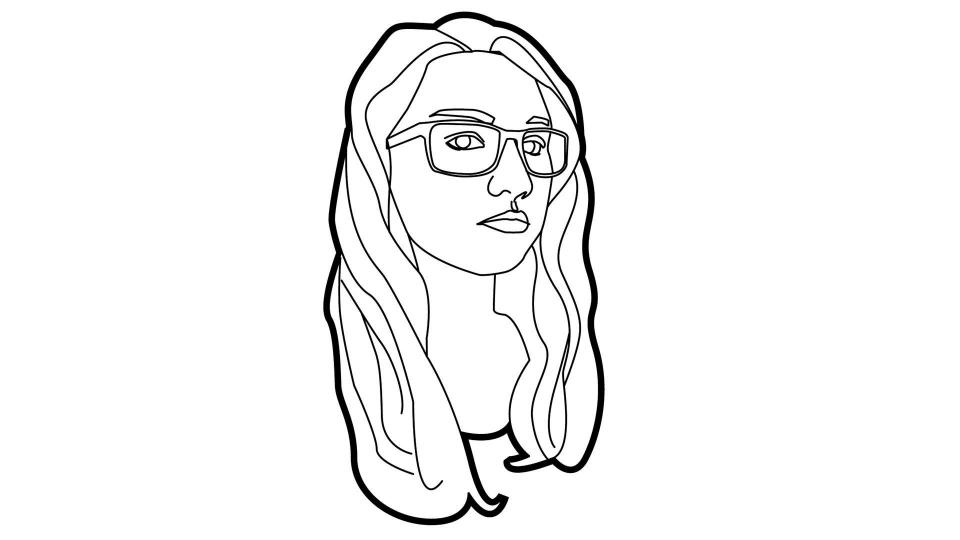- Undergraduate
Graphic Design (Visual Communication and Illustration) BA (Hons)
Overview
Why study at the University of West London?
- Ranked 30th university in the UK - The Guardian University Guide 2025
- Number 1 London university for overall student satisfaction - National Student Survey 2024**
- Best university for Student Experience and Teaching Quality in the UK - The Times and Sunday Times Good University Guide 2024
Why study this course?
Do you want to make your individual mark in the design world? Study our graphics and design course at the University of West London and we will help you to become a standout designer who can work across the exciting media used in modern visual communications.
On your graphic design degree you will find and develop your own visual voice, and receive tutoring on a one-to-one basis and in a small group. You will have access to a range of professional facilities so that you can become competent in both traditional and contemporary design-related areas.
Studying in London, at the heart of the UK’s creative industries, gives you access to leading galleries and exhibitions, as well as potential employers.

Select your desired study option, then pick a start date to see relevant course information:
Start date:
If your desired start date is not available, try selecting a different study option.
Why study Graphic Design (Visual Communication and Illustration) with us?



What our students say…
I love how passionate our tutors are about helping us to achieve to the best of our abilities.
We went to a few design agencies and got to meet professionals in the industry and hear them speak about their workplace which was a great opportunity.




Course detail & modules
This graphic design degree will give you the means to develop your own unique visual identity and find work in this important creative discipline.
This course focuses on the practice and application of graphic design. The practical skills you develop will be backed up by theoretical and contextual studies of graphic design in history and culture.
While your studies are founded on traditional and established graphic design processes and principles, they also embrace the future of design. This means you will cover a broad range of study areas, including:
- typography
- print design
- illustration
- design development
- motion graphics
- web design
- interaction design
- animation
- conceptual design thinking
You will have access to a variety of specialist equipment, including computer labs and digital print, photography and video studios. Through studio-based work, you will develop the skills and competencies to become a capable professional.
As this course is taught from our main campus in Ealing, we integrate London exhibitions, gallery shows, design lectures and other events into our study programme, bringing the best in design into your classroom.
The select number of places available on our BA (Hons) Graphic Design means that we can offer you the one-to-one support you need to learn to express yourself visually. You will be taught using a range of methods, including:
- lectures
- workshops
- studio-based sessions
- seminar groups
This combination of teaching methods will help you to build the practical, conceptual and strategic skills, as well as develop a portfolio needed to thrive in the varied world of contemporary visual communication.
Compulsory modules
-
Visual Languages
In this module, you’ll explore foundational elements of graphic design, visual communication, and illustration with an emphasis on skill development, visual thinking, and literacy to effectively convey meaning through design. You’ll experiment with various media, materials, and processes—from pencil and ink to lens and screen.
-
Digital Foundations
This module introduces you to a wide range of essential digital media skills, techniques and approaches to print, web design, interaction design, motion graphics, animation and installation. You will also explore a wide range of software packages, including Adobe Photoshop, InDesign, Illustrator, After Effects and Cinema 4D. As well as relevant coding and scripting languages for example Processing, HTML, and CSS.
-
Typography
-
Ideas and Process
This module will introduce the development of ideas and processes and how this will inform design solutions appropriate for use in professional practice and employment.
-
Design Contexts
In this module, you will learn how we give things meaning and how this is represented through systems of language, signs and symbols and how designers can represent or re-present the world in terms of meaningful concepts or ideas.
Compulsory modules
-
Word and Image
In this module, you will have the opportunity to develop useful and compelling work through creative play, experimentation and the creation of design solutions.
-
Design Contexts and Critical Research
In this module you will build and develop on the research and analysis that took place at L4 in Design Contexts by examining visual culture through the articulation of beliefs and value systems, exploring further ways of considering contemporary issues and their bearing on visual culture.
-
Narrative Structures and Motion
In this module, you will work with a range of media to explore and examine the nature and creation of visual narratives across creative practice. It will encompass, but not be limited to, illustration, motion, film, animation, video games and publishing and their historical and contemporary contexts.
-
Designing for Innovation and Interaction
In this module, taught sessions will introduce you to and explore concepts that include use cases, mental models, accessibility, prototyping, testing and narratives. With additional workshops and activities on interaction design (IxD) and technology including menus, toolbars, icons and symbols, motion, coding, scripting, and typography on screen.
-
Developing Design Practice
This module will teach you how to apply theoretical knowledge in a practical setting, promoting activities and practices relevant at a professional level to create solutions to solve client problems. It includes studying creative standards, analysing project briefs, and examining current trends in visual communication and graphic design.
Compulsory modules
-
Major Project
In the final year of your degree course, you will create your own project with a high degree of independence. The module will commence with a series of sessions focusing on key aspects necessary for success in the undertaking of a dissertation project including organisational skills, research ethics, managing resources and professional practice. Following this, you will start a self-managed design project of your choosing with guidance and support.
-
Experimental Communications
You will have the chance to challenge conventional wisdom and discover innovative solutions for design challenges. You will look at laser cutting, 3D printing, projection, experimental animation, glitch and more. Through your assignments you will explore experimental communication techniques and learn to mix and match unconventional approaches from different disciplines.
-
Presenting and Portfolio
This module will facilitate the finessing, creation, curation and compilation of your portfolio, or portfolios, that contain the diverse range of work that best represents you as a skilful and effective communicator, that exemplifies your independent voice and direction and supports your future career aspirations.
-
Professional Design Practice and Positioning
During this module you will examine and use a range of ideation and design methodologies, image-making techniques and software. Through various workshops and activities, you will have the opportunity to explore topics you are curious and passionate about, creating new work that will expand the range and relevance of your portfolio.
Entry requirements
These can include:
- A Levels at grade B, C and C, or above
- BTEC Extended Diploma with Distinction, Merit, Merit
- Access to HE Diploma
- T Levels
You also need GCSE English and Maths (grade 9 - 4 / A* - C) or Level 2 equivalents.
As part of the application process, you will be asked to provide a portfolio.
Portfolios should be a maximum of 12 images in PDF format and include evidence of creative practice in the visual arts with examples of process, development and outcomes where applicable.
Looking for BA (Hons) Graphic Design (Visual Communication and Illustration) with Foundation Year?
Mature applicants (aged 21+): If you do not hold the qualifications listed but have relevant work experience, you are welcome to apply. Your application will be considered on an individual basis.
Level 5 (year 2) entry
To directly enter the second year of this course you will need to show appropriate knowledge and experience. For example, you are an ideal candidate if you have 120 undergraduate credits at Level 4 or a CertHE in a related subject area.
Level 6 (year 3) entry
To directly enter the third year of this course you need to show appropriate knowledge and experience. For example, you are an ideal candidate if you have 240 undergraduate credits (at Levels 4 and 5), a DipHE, Foundation Degree or HND in a related subject area.
Looking for BA (Hons) Graphic Design (Visual Communication and Illustration) with Foundation Year?
You need to meet our English language requirement - a minimum of IELTS 5.5 for each of the 4 individual components (Reading, Writing, Speaking and Listening). Visit our English language requirements page for information on other English language tests we accept.
You also need academic qualifications at the same level as UK applicants. In some countries where teaching is in English, we may accept local qualifications. Check for local equivalents.
We offer pre-sessional English language courses if you do not meet these requirements.
As part of the application process, you will be asked to provide a portfolio.
Looking for BA (Hons) Graphic Design (Visual Communication and Illustration) with Foundation Year?
Mature applicants (aged 21+): If you do not hold the qualifications listed but have relevant work experience, you are welcome to apply. Your application will be considered on an individual basis.
Level 5 (year 2) entry
To directly enter the second year of this course you will need to show appropriate knowledge and experience. For example, you are an ideal candidate if you have 120 undergraduate credits at Level 4 or a CertHE in a related subject area.
Level 6 (year 3) entry
To directly enter the third year of this course you need to show appropriate knowledge and experience. For example, you are an ideal candidate if you have 240 undergraduate credits (at Levels 4 and 5), a DipHE, Foundation Degree or HND in a related subject area.
Looking for BA (Hons) Graphic Design (Visual Communication and Illustration) with Foundation Year?
Fees & funding
Additional costs
There are additional costs for this course that are not included in the tuition fees. See the links below to get a better idea of what to expect:
Please note:
- Fees for the 2026/27 academic year and onwards may be subject to Government regulation and change.
- Tuition fees are charged for each year of your course. If your course runs for two years or more, you will need to pay the fee for each academic year at the start of that year.
- If your course runs for less than two years, the cost above is for your full course and you will need to pay the full fee upfront.
- If no fee is shown above then the fees for this course are not available yet. Please check again later for updates.
Funding your studies
You may be eligible for a student loan to cover the cost of tuition fees, or a maintenance loan. Additional funding is available to some types of students, such as those with dependants and disabled students.
We offer generous bursaries and scholarships to make sure your aspirations are your only limit. In recent years, hundreds of students have received our Full-time Undergraduate Student Bursary.
View full details, including conditions and eligibility.
Additional costs
There are additional costs for this course that are not included in the tuition fees. See the links below to get a better idea of what to expect:
Please note:
- Fees for the 2026/27 academic year and onwards may be subject to Government regulation and change.
- Tuition fees are charged for each year of your course. If your course runs for two years or more, you will need to pay the fee for each academic year at the start of that year.
- If your course runs for less than two years, the cost above is for your full course and you will need to pay the full fee upfront.
- If no fee is shown above then the fees for this course are not available yet. Please check again later for updates.
International students - funding your studies
We offer scholarships for international students including International Ambassador Scholarships.
Further information about funding and financial support for international students is available from the UK Council for International Student Affairs.
Teaching staff

Ben Dunning
I am a designer, educator and author specialising in graphic, digital and interactive design. My first book: Video Games: An Introduction to the Industry, was published in December 2015 by Bloomsbury Fairchild. I have nearly 20 years experience of working in web, interactive and graphic design and over 12 years experience in teaching and education. I am currently exploring the role, scope and design of UI in video games.
I am a designer, educator and author specialising in graphic, digital and interactive design. My first book: Video Games: An Introduction to the Industry, was published in December 2015 by Bloomsbury Fairchild. I have nearly 20 years experience of working in web, interactive and graphic design and over 12 years experience in teaching and education. I am currently exploring the role, scope and design of UI in video games.
Study & career progression

A graphic design career can take you in a number of inspiring directions. Once you complete your graphic design degree, you could go on to work in:
- graphic design studios
- interdisciplinary consultancies
- publishing houses
- new media/multimedia studios
- advertising agencies
Some of our former students have also successfully set up their own design businesses.
Students who pursue a career in illustration tend to work on the basis of freelance commissions.
You may decide to specialise in a related area or explore a new subject. Please see our postgraduate courses for a range of options.
How to apply

Head to the UCAS website where you can apply using:
- our institution code - W05
- the UCAS course code (below)
Want to ask us a question first? We would love to hear from you. Contact us free on:
- 0800 036 8888
- courses@uwl.ac.uk
We may ask you to submit a portfolio of work and come to the university to discuss it with us. Find out more about submitting portfolios.
Apply for this course
- Institution code
- W05
- UCAS code
- currentVariantData.field_p_cv_ucas_code
Next steps after making your application
We aim to make a decision on your application as quickly as we can. If we need any more information about your qualifications, we will be in touch.
In the meantime, come and visit us and find out more about what studying at UWL is like. Sign up for an open day or join a campus tour.
Visit us and see for yourself
Talk to our tutors and find out about our courses and facilities at our next open day or join a campus tour.
Our prospectus
All of our courses in one place - download now or order a hard copy.
We're here to help
Any questions about a course or studying at UWL? We're here to help - call us on 0800 036 8888 (option 2, Monday – Friday 10am-4pm) or email us on courses@uwl.ac.uk.

You can apply to us in two ways:
- on the UCAS website – you will need our institution code (W05) and the UCAS course code (at the top of this page)
- directly on our website – follow the ‘apply now’ link below
Want to ask us a question first? Our dedicated international students’ team would love to hear from you.
- contact international@uwl.ac.uk
We may ask you to submit a portfolio of work and come to the university to discuss it with us - or do so online, if you aren't able to travel here. Find out more about submitting portfolios.
Apply for this course
Next steps after making your application
We aim to make a decision on your application as quickly as we can. If we need any more information about your qualifications, we will be in touch.
In the meantime, come and visit us and find out more about what studying at UWL is like. Sign up for an open day or join a campus tour.
Visit us and see for yourself
Talk to our tutors and find out about our courses and facilities at our next open day or join a campus tour.
Our prospectus
All of our courses in one place - download now or order a hard copy.
We're here to help
Any questions about a course or studying at UWL? We're here to help - call us on 0800 036 8888 (option 2, Monday – Friday 10am-4pm) or email us on courses@uwl.ac.uk.
Search for courses
Hear from our Alumni

University of West London graduate, Catarina, shares her insight of the BA (Hons) Graphic Design course and her path from illustration to creating motion graphics for the BBC.
ARTSFEST

Student work

Ollie Slater
Ollie is a creative and detail-oriented graphic designer with a passion for branding, print, and 3D design.

Phoebe Watts
Phoebe believes design should be simple, impactful and true to the cause.
Phoebe is a designer who takes pride in her artistic background and technical skillset, utilising it to problem solve and experiment with different ideas.
Student life at UWL
Important notes for applicants
Disclaimer
*Modern universities - defined as higher education institutions that were granted university status in, and subsequent to, 1992.
**The National Student Survey 2023 and 2024 - Average of answers to all questions by registered student population. Excludes specialist institutions.
Testimonials - our students or former students provided all of our testimonials - often a student from the course but sometimes another student. For example, the testimonial often comes from another UWL student when the course is new.
Optional modules - where optional modules are offered they will run subject to staff availability and viable student numbers opting to take the module.
Videos - all videos on our course pages were accurate at the time of filming. In some cases a new Course Leader has joined the University since the video was filmed.
Availability of placements - if you choose a course with placement/internship route we would like to advise you that if a placement/internship opportunity does not arise when you are expected to undertake the placement then the University will automatically transfer you to the non-internship route, this is to ensure you are still successful in being awarded a degree.






